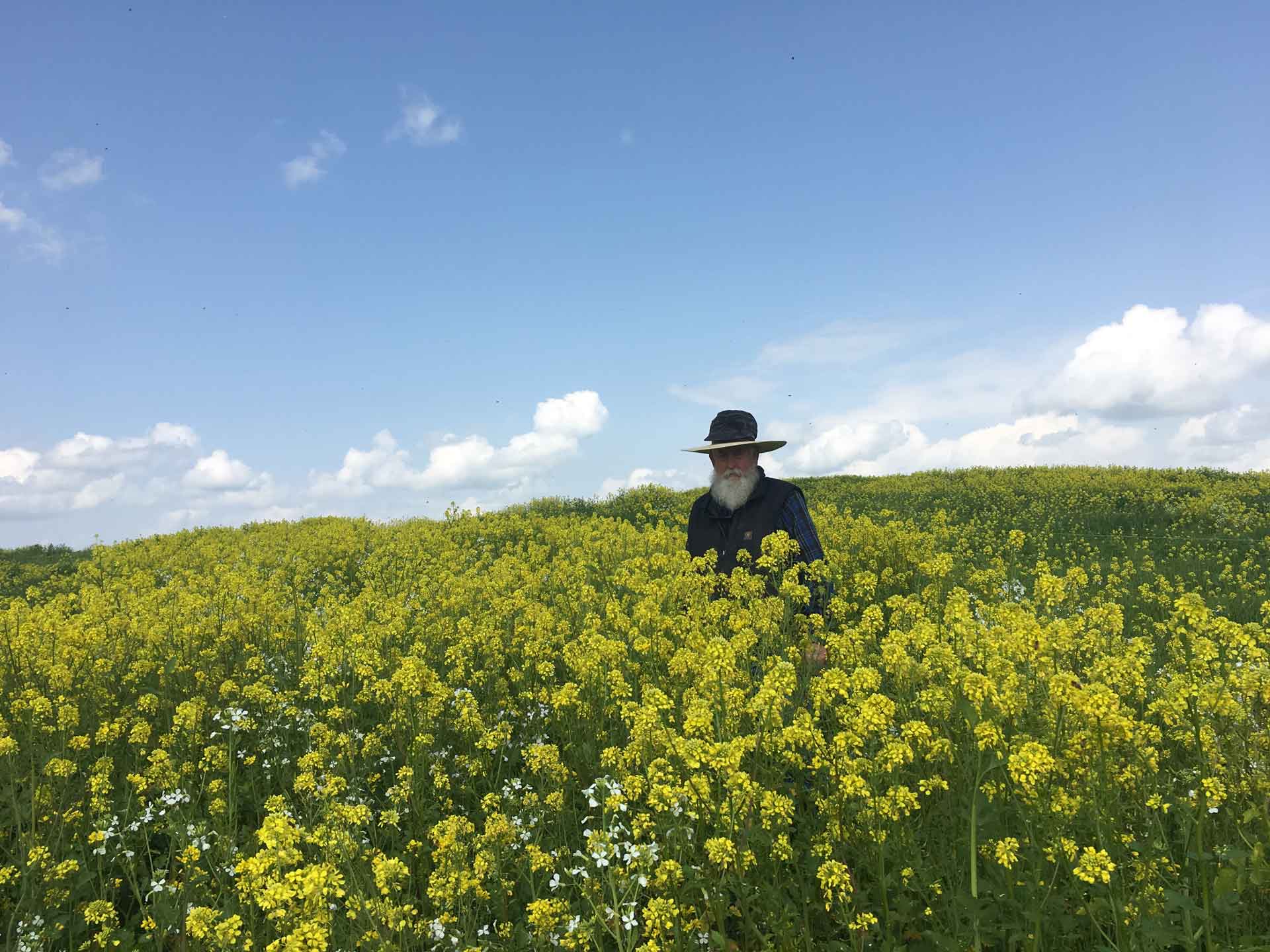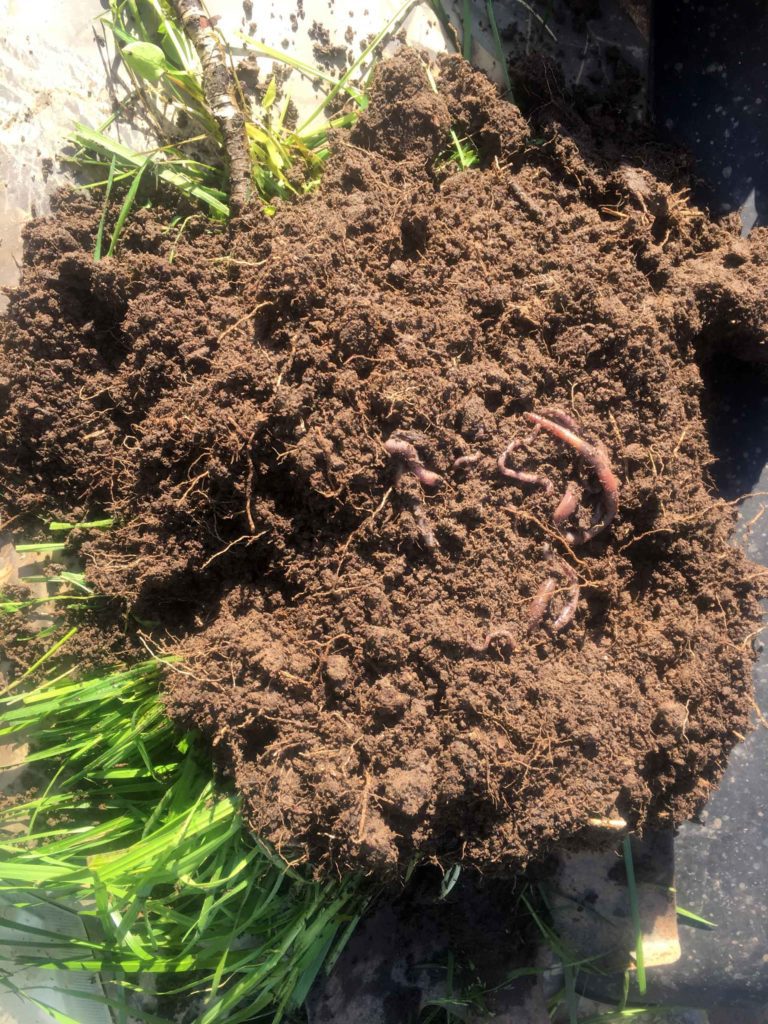
Like many of the farms in California’s Central Valley, Burroughs Family Farms is the current iteration of a generational legacy spanning all the way back to the early 1900’s. A humble start as milk delivery service in the East Bay soon grew to a dairy, then a move to the Valley allowed for expansion. Three generations and 1,100 acres in, what was once the old way of farming is now becoming new—organic and regenerative.
Transitioning to Organic
“We were conventional farmers up until 2000,” says Benina Montes, owner and manager of Burroughs Family Farms. “We farmed almonds conventionally, but used compost and manures to fertilize the trees.”
Growing up around beef cattle, dairy, and almonds, Montes was familiar with a cyclical agricultural structure, but her family partnership was interested in ways to diversify the almond aspect of the farm. At the time the family was becoming interested in organic farming practices, Montes’s brother was beginning a dairy on virgin ground. Since the land hadn’t been sprayed, they decided to go organic from the very start, using this endeavor both as a tool for education and diversification.
“We were open to being educated, and we saw that going organic wasn’t scary. So, in 2006, we started transition of our first block of almonds,” says Montes.
The differences became obvious to the family farmers. The organic block became greener, the trees didn’t look stressed, and certain pests weren’t present.
When Montes became pregnant, she didn’t want her children or herself exposed to the harsh chemicals of a conventional farm. She also didn’t want any of her employees exposed to such chemicals, either. “We got rid of all the chemicals and decided we would just figure out something else. The more we learn and see the positive results of organic/regenerative farming practices, the more we are committed to them.”
2015 was the first year the entire farm was certified organic.

Regenerative Farming
Burroughs has taken their organic operations a step further by implementing regenerative farming practices. After attending industry conferences that made note of negative environmental changes, the Burroughs team realized steps could be taken on the farm to help combat these changes.
“We have choices,” says Montes. “In agriculture, we need to stay positive for each other, but there are differences in how we farm, and if someone chooses to do it differently, that’s okay.”
Transitioning an orchard isn’t necessarily easy, and farmers run into bumps along the way. For Burroughs Family Farms and many others, it’s about making the numbers work and not losing too much in production during the transition process. According to Montes, it has to be part of a workable balance, where money continues to come in so farmers can continue to employ their staff, which in turn continues to keep the farm functioning and organic methods intact.
Labor
As farm manager of Burroughs Family Farms, Nick Hibma knows exactly how important this is. Organic farming simply requires more physical labor. “In today’s climate, with the lack of labor in general, getting the number of people necessary to cover the ground in an organic setting can be a challenge,” says Hibma. “Conventional guys are able to come in with a spray, cover the ground, and not be back on it for several months.” But Hibma and his crews are out in the field frequently in order to maintain the orchard.
Research
Financial feasibility also allows for continued access to information. While the Burroughs operation does conduct trials in their own orchards, Montes is acutely aware that there just isn’t as much research funding in organic farming as there is in conventional farming, especially in crops harvested off the ground as opposed to directly from the trees.
Pest Control
Aside from the financial aspects, pest control is a top-ranked topic in the industry in general, and, therefore, especially piques interest when discussing organic practices. Erring on the side of prevention, Burroughs does dormant spray, uses compost tea, and is working on biologicals, but also greatly supports habitats for beneficial insects. Planted all around the ranch are either native or blooming plants. “We try to have something in bloom every day, so that those beneficial insects always have somewhere to go,” says Montes.
As for the usual suspects, like navel orangeworm, Hibma stands behind the farm’s aggressive winter sanitation program. After harvest, the team goes back through to shake remaining nuts from the trees, sweeps them to row centers, and mows to kill the pest. “Winter sanitation is first and foremost—and the absolute key—to prevent navel orangeworm populations,” says Hibma.

Benefits of Organic
Another challenge of organic farming is the lack of overall information. The shortage of research means a little more legwork from farmers, like making sure they have the proper reports from farm advisors, and keeping track of additional paperwork.
But to Montes, and the entire Burroughs family, it’s worth it for a number of reasons. They know they are caring for natural resources, and that their practices are ensuring cleaner air, water, and soil. “I don’t have to worry as much about my own kids being out in the field,” says Montes.
The organic-approved sprays that are used are much softer products than conventional pesticides and insecticides, and are safe for beneficial insects. The fields are no-till, so the grass and cover crop is left to grow, and then simply mowed and left to break down and cycle back into the soil. Weeds are also managed with mowing and without chemicals. The farm is irrigated using drip irrigation, and the fertilizer program includes dried poultry litter applied in the fall, Biologically Enhanced Agriculture Management (BEAM) compost, farm-brewed compost tea, and cover crops.
There has been a boost in natural, healthy activity in the orchards, including beneficial microbes, birds, and more. (While digging to look at the soil in the first and second years of transition, the Burroughs team happily found three times as many worms.) Hibma, whose curiosity into regenerative farming ultimately landed him at Burroughs, is glad to see the increased interest in this method, and the expansion of cover crops, bee programs, and compost. “Farmers can’t just push, push, push, and keep taking from the orchard without expecting to put something back into it. You have to have that life cycle that goes with it.”
Montes agrees. “It’s such a sign of life.”










